As soon as interest rates started dropping, value plateaued.
BAY OF PLENTY
Chief executive Greg Foran leaves Air New Zealand this month. Where to now? Page 6 STEADY PROPERTY
The voice of Bay of Plenty
HARVESTS
Kiwifruit companies are enjoying the fruits of solid harvests. Page 7
Honey giant rebounds
Once hailed as one of New Zealand’s most successful natural health companies, Comvita is now navigating a turbulent market, internal challenges, and a major ownership change. David Porter analyses the challenges.
It came as a surprise to many observers to see the recent profit slump of Comvita, long considered one of New Zealand’s best-performing companies.
The Te Puke-headquartered honey producer and marketer had

built up an enviable reputation since its founding in 1974.
“The dilemma the company has had in recent times is the result of a perfect storm of industry-related issues,” one well-connected industry observer told The News.
Newly appointed chief executive officer Karl Gradon says a key element in Comvita’s lanned resurgence is the strength of its brand.
He told The News that a key element in the company’s plannedfor resurgence was the strength of the Comvita brand.
“Our brand remains very strong,” he says.
“We have to look at how we buy from acreages throughout New Zealand for our consumers. That’s where there’s an opportunity to realign - we have the building blocks in place. But haven’t always aligned them as well as we could have.
“The second thing is just making sure that what we execute on, we do extremely well. Execution on the basics is a very core principle of a consumer-centric business. That’s the key.”
In response to the market slump, Comvita reached an agreement to sell the company to New Zealand firm Florenz, a subsidiary of Christchurch-based investment company Masthead Ltd. Florenz is part of a group of privately
owned natural health and wellness businesses.
Under the scheme implementation agreement (SIA), Florenz will acquire all Comvita shares at 80 cents per share - representing an equity value of $56 million and an enterprise value of $119 million.
The SIA has unanimous backing from Comvita’s board and two of its largest shareholders, China Resources Enterprise and Li Wang, who together hold 18.3 per cent of shares.
Shareholder approval will be sought at a special meeting expected in November, with the scheme likely to be implemented in Decemberpending approval.
Comvita’s latest audited results for the year ended 30 June 2025 described another difficult year, citing “significant financial pressure and persistent headwinds across both external markets and internal operations.”
They have been key issues for the company. A key problem for the industry in general has been a massive recent over-supply and low prices worldwide for honey.
The company reported revenue of $192.4 million (down 4.1%) and gross profit of $82.7 million (down 24%). However, it also noted $12.6 million in cost reductions, with further actions underway.


Editor
David Porter dwp@davidporter.co.nz 021 884 858
Advertising Director
Janine Davy janine@goodlocal.nz 027 287 0005
Owner/Publisher
David Mackenzie david@goodlocal.nz 021 684 304
To Advertise sales@goodlocal.nz
News Tips editor@goodlocal.nz
Office/Accounts admin@goodlocal.nz
Website goodlocal.nz
Readers’ contributions of articles and letters are welcome. Publication of contributions are entirely at the discretion of editorial staff and may be edited. Contributions will only be considered for publication when accompanied by the author’s full name, residential address, and telephone number. Opinions expressed are not necessarily those of the publishers. Bay of Plenty Business News is published by Good Local Media Limited.
Also publishers of

TThe new world dis-order
By DAVID PORTER
he recent summit meeting in China of the Shanghai Cooperation Organisation (SCO) in the port city of Tianjin saw some media reports categorise it as a get-together for dictators.
And while that description is something of an overreaction, the SCO did attract the high profile attendance of Russian leader Vladimir Putin and North Korea’s Kim Jong Il, who are indeed dictators of their countries.
The SCO attracted more than 20 foreign leaders and the heads of 10 international organisations. Attendees included Indian prime minister Narendra Modi, among others who were in fact democratically elected.
It was Modi’s first visit to China since 2018, and his attendance was very much propelled by the global trade disruption created by US President Donald Trump’s inconsistent levying of tariffs worldwide.
Modi’s attendance indicated that countries like India are seeking stronger partnerships with Beijing and other regional players as the country wrestles with the tariffs imposed






This newspaper is subject to NZ Media Council procedures. A complaint must first be directed in writing, within one month of publication, to the editor’s email address.
If not satisfied with the response, the complaint may be referred to the Media Council P O Box 10879, The Terrace, Wellington 6143. Or use the online complaint form at www.mediacouncil.org.nz
Please include copies of the article and all correspondence with the publication.


by the US.
The US president responded to the SCO with a pointed social media post on Truth Social, suggesting that India and Russia have been now “lost” to China. “Looks like we’ve lost India and Russia to deepest, darkest China. May they have a long and prosperous future together!”
It is worth remarking that it is extremely unusual for the leader of a major country to post comments with international implications on a page of his own social media company.
Or, for that matter, to post online comments with potentially international and US economic significance.
For any of us who have been studying US politics, it is no surprise that the US politician’s boasts throughout his election campaign - that he could bring the appalling war resulting from the Soviet Union’s invasion of the Ukraine to an end “within a day” of election - have proven to be nonsense.
In fact, despite Trump literally rolling out the red carpet for Putin at the recent Alaskan
summit on Ukraine, Putin has essentially ignored his overtures.
And we should keep in mind that Putin’s world travel plans have been considerably truncated in recent times because of the International Criminal Court decision that he should be arrested should he visit any country bound by its rulings. The U.S. is not a state party to the ICC because it has not ratified the relevant Rome Statute. And it has on occasions opposed the Court’s jurisdiction over American citizens and sought to counter its actions.
Perhaps the biggest recent example of declining US authority worldwide was the decision by Israeli prime minister Bibi Netanyahu to facilitate the bombing of Qatar – reportedly using US military equipment and without pre-advising the US. Qatar has been a consistent mediator in talks aimed at bringing peace to Gaza.
Just at a time when the world needs a superpower embodying the concepts of a consistent embrace of democratic values, the US no longer appears capable of playing its traditional role.
Honey giant rebounds
A major issue facing the industry has been global oversupply and falling honey prices. Sources say consumer demand for premium crops has dropped, while growers held onto stock hoping for better prices - only to release it later, flooding the market.
Comvita chair Bridget Coates acknowledged the challenges in a report to the Stock Exchange saying Comvita’s FY25 performance reflects the full weight of prolonged market disruption - particularly in China - compounded by internal challenges and limited financial headroom.
“The company continues to navigate sustained structural pressure in the Mānuka honey sector, with prolonged oversupply, pricing volatility, and softer consumer demand weighing heavily on margins. These external pressures have been compounded by internal complexity, underperforming investments, and the cost of delivering a significant turnaround.
“We weren’t fast enough to adjust - and those same market dynamics have only intensified, she advised the Stock Exchange. We recognise the impact this has had on our

shareholders and the importance of delivering a clear path forward.”
Gradon brings experience from his time as CEO of Miraka, the Taupōbased, low-carbon, Māori-owned dairy company, where he led a successful transformation. He has also held senior roles with Fonterra and Kerry Ingredients, and later returned to New Zealand as CEO of New Zealand Manuka Group, leading its expansion into North America - including a launch into Costco.
Gradon told The News the market is working through “a number of blockages,” and while sentiment is improving, recovery may take longer than expected.
“We are seeing [the market changes] move through the value chain.”
The key element when trying to succeed in any market was to try and sell more.
“You just need to move the stock through and maximise [the return] in the quality chain,” he says.
“We should win eventually. My key is making sure we stay focused on consumers in the value chain.”
“We go into these things with our eyes wide open,” Gradon says when asked about the challenges ahead.












Tourism push
Tourism Bay of Plenty has launched a new campaign focused around the “humblebrag” concept, which uses a tune by awardwinning musician Tiki Taane to encourage domestic travellers to visit. The campaign features BOP locals enjoying activities during the region’s off-peak season, such as a beachside sauna, scenic golf course, fishing, surfing, and skateboarding.
Pool programmes
The Te Puke Memorial Pool and Dave Hume Pool in Katikati will offer an expanded range of activities and swimming programmes when they open for the summer season under new operators. Western Bay of Plenty District Council has awarded the pool service delivery contract to Bay Venues, for the next four years, with a twoyear, performance-based extension.
Takitimu progress
Western Bay of Plenty District Council has welcomed news that the new four-lane expressway between Te Puna and Ōmokoroa has been progressed to the next stage.
NZ Transport Agency has announced that it has lodged applications for statutory approvals for Takitimu North Link Stage 2, under the Fasttrack Approvals Act.
Kiwifruit fund
Sungold kiwifruit may provide an opportunity for overseas investors to gain residence in New Zealand.
Fund Management firm Greener Pastures has launched a fund targeting foreign investors with at least $4.8 million to invest in the kiwifruit sector, with approval from New Zealand Trade and Enterprise.
Vital move
Chartered Accountants
Australia and New Zealand welcomed the decision to reinstate accounting as a standalone subject at NCEA Level 1 from 2028, calling it a vital move to nurture the next generation of Kiwi business leaders.
Property prices broadly steady
Few
massive increases or decreases
seen in the real estate market, reports David Porter.
Data from the Real Estate Institute of New Zealand (REINZ) shows a modest year-on-year dip in the national median price, although most regions saw median prices lifting year-on-year, and values remain broadly steady as listing numbers increase.
As noted by Harcourts Advantage Realty managing director Simon Martin, values generally have been sitting pretty steadily nationally over the past 18 months. Martin told The News that Tauranga market values had been sitting about 20 per cent up on the industry.
Generally sales they had experienced had been positive in Tauranga.
“That’s a positive” he told The News. But he noted that was the trend specifically observed in Tauranga.
“A lot of [real estate] commentary is on the values of property and yes they have sat pretty static,” he says.
“There haven’t been any massive increases and there haven’t been any massive decreases since the post-Covid palaver,” he says.
“I think part of that has been countered by the interest rates drops.
As soon as interest rates started dropping, the value plateaued.”
According to the REINZ report, 13 out of the 16 regions reported an increase in median prices compared to August 2024, with Auckland’s median price increasing by 1.3% year-on-year, to $964,000.
The most significant year-onyear increases were recorded in Gisborne, up 11.3% from $620,000 to $690,000, Southland, up 8.9% from $427,000 to $465,000, and in the West Coast, up 7.8% from $357,000 to $385,000.
“Across New Zealand, confidence in the property market is tempered with caution,” says REINZ Chief Executive Lizzy Ryley.
“While many expected the recent OCR [Official Cash Rate] change to encourage more activity, the history of REINZ data suggests that we may be cautiously optimistic that we will see an increase in activity in the market in the coming months. At this stage, both buyers and sellers appear to be taking a measured approach as they watch how the market unfolds, particularly as we near Spring.”
According to the recent ANZ property report, regionally Auckland

led price declines, while the housing markets in the South Island had been more resilient, in line with their stronger job markets.
The ANZ report says that given soft near-term price momentum, it had trimmed its 2025 house price inflation forecast from 2.5% to around zero.
But it notes that the Reserve Bank’s recently signalled willingness to cut at its August Monetary Policy Statement meant that the bank now
expected the OCR to reach 2.5% by the end of the year.
According to the report, this would support a gradual recovery in the housing market and the wider economy.
“We continue to expect 5% house price growth in 2025,” the report says.
“We also expect house price growth will be tempered by expectations that interest rates will eventually lift back up from low levels.”
Priority One appoints new CEO
Dave Courtney is taking up the position of chief executive at Priority One in December, replacing longserving incumbent Nigel Tutt, who is moving to a new senior role with Stuff Digital.
Courtney told The News that his key focus would be on maintaining P1’s momentum as the Western Bay of Plenty’s economic development agency.
“And obviously P1 has got a particularly material conversation in the regional deal that is currently happening,” he told The News.
Courtney was referring to the need to maintain progress on implementing the regional memorandum of understanding by government with a select group of New Zealand

regions, with P1 having a central role in that process for the Tauranga region.
“We will be maintaining the momentum in that and the good work that’s been done to date,” he says.
Courtney also will be building on the foundations of P1 and what they’ve established and where they’ve contributed to city development key issues such as talent and business attraction.
“It will be about how we carry on the good work they have been doing there,” he says.
Courtney originally hails from Blenheim, which he describes as a great place to grow up.
Trained as a journalist, he later moved into strategic communications with the New Zealand Defence Force
and the Ministry of Foreign Affairs and Trade, before joining the private sector.
In 2011, he moved to Tauranga where he joined Zespri International, ending up as the chief grower and alliances officer in the executive team. He moved to Silver Fern Farms in 2021.
He has been responsible for leading a team tasked with driving the company’s global sales, growth and innovation strategy. He currently leads a global team of more than 120 people across New Zealand, China, Japan, Korea, the Middle East, the United Kingdom and the United States.
However, Courtney attributes his initial training as a journalist to helping his career development.
“I think the skill set you pick up in journalism


in terms of your ability to understand issues reasonably quickly, and to understand and relate to people, have certainly helped,” he told The News.
“I developed [those skills] in journalism and it has continued for me in different roles. And has been hugely helpful to what I am doing today.”
Priority One chairman
Todd Muller told The News that the organisation was delighted to welcome Courtney, who was bringing with him a wealth of experience and considerable international experience.
Muller says the organisation was incredibly fortunate to have someone of Courney’s calibre leading Priority One into its next phase.
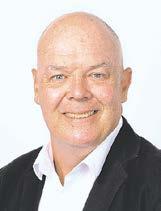
Muller also acknowledged Courtney’s predecessor Tutt’s lengthy contribution to Priority one.
“He leaves a great legacy and we wish him all the best in his new senior leadership role in the New Zealand media scene,” he says.



University of Waikato supports Tauranga’s CBD growth
The University of Waikato’s Tauranga campus has become a part of the city’s redevelopment, contributing education, research and community activity in the heart of the CBD. Since opening six years ago, the campus has grown steadily and is now a recognised part of Tauranga’s development story.
Today, the campus is home to around 1,250 full-time equivalent students and growing. Enrolments have risen year on year post-Covid-19, with both domestic and international students choosing to study in Tauranga.
Their presence enriches the campus community and contributes to the economy by supporting local businesses, hospitality and accommodation.
This growth shows the campus is embedded in the city centre and connected to the wider region, while also linking Tauranga to
global networks of learning and research.
As Tauranga’s CBD continues to transform, the University is contributing to a more active, lived-in city centre. Students and staff are part of the daily rhythm, adding energy to the urban environment and supporting new investment.
Planned additional student accommodation and expanded education facilities will add momentum, placing more learners in the city as it evolves.
The academic offering in Tauranga is also expanding. In 2026 the University will introduce the Master of Management (Marketing), providing a postgraduate pathway in an area critical to business growth and innovation.
The Bachelor of Health will also launch in Tauranga, giving students the science background for entry into the New Zealand

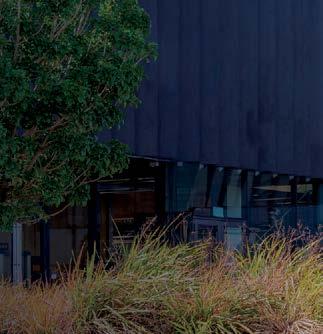


EDUCATION
BY PROFESSOR ALISTER JONES
Graduate School of Medicine, scheduled to open in 2028.
Looking ahead, the Master of Social Work Practice and Master of Construction Management are planned for 2027, alongside the Master of Engineering Practice – Civil in 2028. These and other programmes in development, will prepare graduates for advanced practice across education, health, social services and industry, addressing the region’s pressing need for skilled professionals and


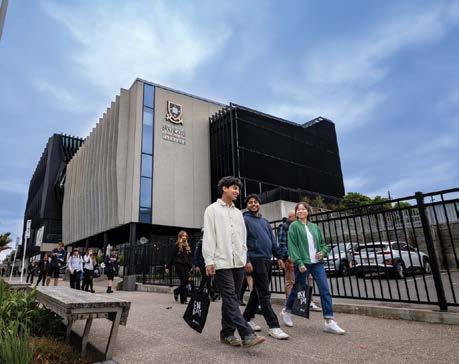
aligning student aspirations with workforce needs.
Alongside programme growth, new facilities are strengthening the campus’s role as a regional asset. A new engineering lab offers spaces for applied learning and research, while supporting collaboration with local industry partners.
Planning is also advancing for the New Zealand Institute for Marine Futures at Sulphur Point, a nationally significant facility that will expand Tauranga’s role in marine science, innovation and public engagement. These projects support the region’s innovation capacity and strengthen connections between education, industry and economic development.
The University of Waikato’s presence in Tauranga has always been built on partnership with hapū and iwi, local government,
industry and the wider community. These relationships have created a campus that contributes to the CBD’s future as a forward-looking centre.
As Tauranga continues to grow, so too will the University. The campus is set to expand in size and scope, providing tertiary education and partnerships that will support the Bay’s development for decades.
Businesses seeking research collaborations, student placements or professional pathways are invited to connect with the University, while prospective students are also invited to explore the growing range of study options in Tauranga.
Professor Alister Jones is the Deputy Vice-Chancellor at the University of Waikato. He can be contacted at alister.jones@waikato.ac.nz
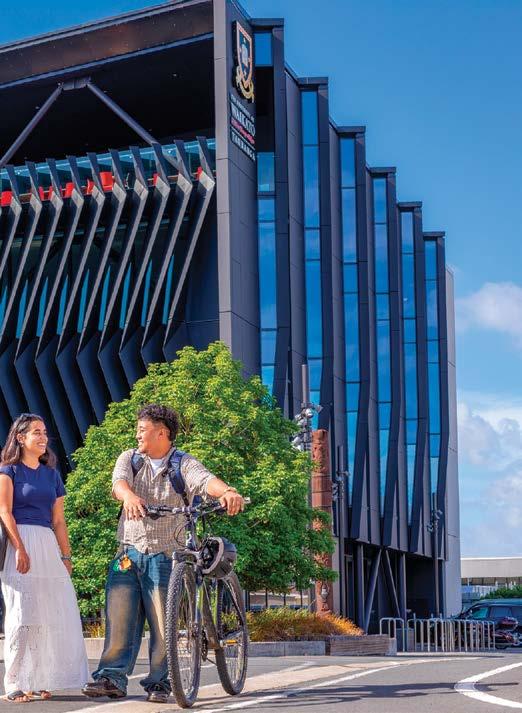

Workers pay policy price
By RICHARD STEELE
Another mill closure announced, this time a plywood factory in Tokoroa, and that’s on top of the earlier shutting, of part of the pulp mill there.
I cannot imagine how bad that would be to lose your job, your livelihood, at any time, let alone when the economy is not doing that well. The chances of being able to walk into other suitable positions for plywood manufacturing people will I’m sure be tough, so I wish them well, and hope that they can get a reasonable redundancy.
A big question springs to mind though, as from my readings of the situation, Carter Holt, the plant owner, can make the plywood 60 per cent cheaper in Australia.
Why is nobody asking about that or what is their union’s position here.
A New Zealand plant right next to the forest it needs, with a willing workforce one would assume, can be undercut by Australians.
As I understand it Australia has higher wages than we do, an overall lower cost structure than we do, a better or warmer climate than we do, apparently a more attractive place to be.
So many people are heading over there to revel in the golden country’s riches.
Wat am I missing here?
How can the Aussies be so much better off than us, and yet they can produce plywood for 60 per cent less than we can?
Similarly, a mill in the Nelson region is closing with amazing loss of jobs, because the owners can better serve their clients from Kawerau.
Really, maybe, except I don’t believe it.
So why are our country’s structures so out of gear? We could be so good here in New Zealand, yet we seem to be lagging so far behind our neighbours, that someone must really be asking why, and to do more than that, to actually come up with some answers.
Equally, what are we doing with our pollsters. According to them, we would vote back a Labour led coalition tomorrow, if an election was held then.
How quickly have those polled forgotten the mess the last lot led us in to.
Richard Steele is a central North Island hill country farmer, author and tourism business operator
TALKING ECONOMICS

A dangerous delusion
By PETER NICHOLL
Two significant items of economic news came out last week. Food price inflation had risen by 5 per cent over the past year. That would have surprised nobody. Gross domestic product fell by 0.9 per cent in the June quarter, and on a per capita basis fell even more. That surprised almost everyone. Most were expecting a decline but not by that much.
While the gross domestic product fall was alarming, what has alarmed me more is the political and media response to the fall. The Minister of Finance said, “this has been a very hard-fought economic recovery after a very difficult few years of sky-high inflation and soaring interest rates”.
While inflation and interest rates did rise over the past few years, to describe them as ‘sky-high’ and ‘soaring’ is a stretch. Even more of a stretch is to think that they’re the main reasons for our poor growth performance. It is due to our abysmal productivity. The policies that need to change that rest with the Government, not the Reserve Bank.
Red-tape and stifling regulation impose enormous costs on every business. This Government said they were going to light a bonfire under all our unnecessary or overburdensome rules and regulations. While a few things have been done, it certainly hasn’t been a bonfire - and a bonfire is what New Zealand needs.
But the only policy response talked about in the media is the Reserve Bank cutting interest rate more aggressively. One bank economist said, “the Reserve Bank can now cut the official cash rate strongly because there is confidence that inflation will be lower later down the track”.
Really? How can anyone be confident that inflation will be lower ‘later down the track’ when food prices are rising at five per cent, rates and insurance prices are rising at over 10 per cent and we have many people
PEOPLE AND CULTURE

Making the most of 90 days
By SARAH LIM
Since December 2023, the 90-day trial period has been available to all employers, regardless of the size of their workforce.
When used correctly, this clause is a powerful tool, boosting an employer’s confidence in hiring.
It allows them to assess a new employee’s suitability and capability without the pressure of following a comprehensive process to end the employment if the person turns out not to be the right fit.
At the EMA, our AdviceLine fields around 500 calls each week from employers across New Zealand, and the trial period clause continues to feature regularly in member queries.
The clause prevents an employee from raising a personal grievance for unjustified dismissal within 90 days.
However, if the employer fails to ensure the clause is valid, enforceable, and correctly applied, terminating employment under the trial period can become a costly mistake.
For example, in the recent case Singh v Pilling & Leggett Engineering Co Ltd, an employee was awarded $15,000 for hurt and humiliation.
The trial period clause in that case did not reference the correct section of the Employment Relations Act 2000, and the employee had not been advised to seek independent advice before signing the employment agreement.
If you’re considering terminating employment under the 90-day trial
period clause, keep in mind that four key conditions must be met to ensure the clause is valid and enforceable:
The offer of employment must include the trial period clause. If there has been a verbal offer and acceptance without reference to the trial period, introducing it later in the written agreement can cause issues.
The employee must be given sufficient time and opportunity to seek independent advice before signing.
A good rule of thumb is at least three to five working days.
The employee must commence work on the date specified in the agreement. This ensures clarity around when the trial period starts and ends.
The signed employment agreement must be returned before the employee begins work.
Even if the trial period clause is valid and enforceable, employers must remember they still owe a duty of good faith.
The clause does not prevent an employee from raising a personal grievance for unjustified disadvantage.
To minimise legal risk, employers should provide a clear explanation for the termination and honour the contractual notice period outlined in the agreement.
Sarah Lim is senior associate at the Employers and Manufacturers Association (EMA)
leaving for Australia because wages in New Zealand are too low?
Also, the Reserve Bank has cut its cash rate more strongly than Australia, Canada, the UK and US over the past year yet gross domestic product is rising more strongly in all those countries than here.
People need to start realising that lower interest rates are not going to solve any of our fundamental economic problems. It may mask them for a while but when the temporary impact of the lower interest rates wears off, our fundamental problem of poor productivity will stall our economic growth once again.
When I first started working as an economist way back in the 1970s, we had a very similar economic debate. The difference then was that the policy panacea was lowering the exchange rate.
We devalued, things looked a little better for a short time, then the old problems that hadn’t been solved started impacting again, so we devalued again – and so it went on for over a decade, a decade during which New Zealand steadily slid down the global table of gross domestic product per capita.
The debate in the media since the poor gross domestic product data came out last week has taken me back to the 1970s. We look for a simple answer for a complex problem.
I don’t actually object to the Reserve Bank lowering interest rates a little more. What worries me is that many people, including some of our politicians, seem to think that is all we need to do get the New Zealand economy purring along again. That is a very dangerous delusion.
Peter Nicholl was formerly Reserve Bank of New Zealand deputy governor, World Bank Board executive director and Central Bank of Bosnia and Herzegovina governor. He is now retired.


Beyond the aisles
Chief executive Greg Foran leaves Air New Zealand this month. He spoke to senior writer Mary Anne Gill as his remarkable leadership journey with the airline comes to an end.
The two trainee pilots are ecstatic as they get their photos taken with outgoing Air New Zealand chief executive Greg Foran.
“I want to be like you one day,” says the male student in a reverential tone.
“I’m not a pilot,” says Foran.
“No in business, just like you,” the student says before disappearing into the crowd celebrating the arrival of Air New Zealand’s A320 at Hamilton Airport – the first domestic jet for 25 years.
Foran, 64 has arguably been New Zealand’s most high profile CEO in recent years starting with Air NZ on February 3, 2020, only weeks before the Covid-19 pandemic decimated the airline industry.
Previous Air NZ bosses had faced challenges. When now Prime Minister Chris Luxon took the reins in 2013, he wasn’t afraid to launch new routes and cut others. Before him, Rob Fyfe turned the airline around after the government injected taxpayer funds in 2001.
But none of them dealt with anything as disastrous to the business as Covid.
Foran had to lay off staff, send planes to deserts in the US and Australia, cut back regional services and grapple with a cost-of-living crisis.
So it was no surprise earlier this year that despite the offer of a hefty pay increase, Foran decided his time at Air New Zealand was up. He leaves later this month with chief digital officer Nikhil Ravishankar taking over.
The News asked Foran what he plans to do next.
“I’m not retiring,” he says with a glint in his eyes when we suggest he might be returning to the United States where former Walmart chief executive Doug McMillon described him as “the greatest retailer on the planet.”
Retailing is where Foran started his career, stacking shelves in a Hamilton supermarket.
He was a store manager at 20 and by 48 was leading Woolworths’ supermarket division in Australia until he was passed over for the top job.
Foran joined Walmart, the giant American multinational retailer, initially running its Chinese operations before McMillon put him in charge of all US stores.
His Air New Zealand appointment came as a surprise. When he returned to his homeland, he brought with him an American twang - now almost gone except when he says the word route.
It was a baptism of fire. Five years and eight months later he knows a lot more than when he started.
“Hey, you’ve heard a bit from an old broken down shopkeeper, who’s had to
learn a bit about aviation,” he says.
Last month he popped over the Tasman to see son Kieran play his final professional rugby league match. The former Kiwi five eighth played 318 first grade matches and scored 60 tries in a 17 year career ending with a 36-28 win for the Gold Coast Titans against West Tigers.
“Only about 0.5 of one percent of all players get to 300 games, so he’s had a great career and I’m really proud of him.”
Foran was part of an Air NZ contingent who made the trip south to Christchurch for a celebratory luncheon and then the return trip by A320 to Hamilton, where Foran helped deliver the Koru Hour service.
“I’m very pleased we’ve been able to pull this one together. It makes sense for us. I think it’s going to be good for tourism,” says Foran.
“What you tend to do is you look at your network and say, ‘where does it make the most sense to employ that asset. And that means that naturally airlines will go into routes and they’ll pull out of routes and they’ll adjust routes. That’s the nature of the business.”
Air NZ wants to resume flights between London and New Zealand, but needs its new Boeing 787s. The first two of eight will arrive next year and will be able to carry more cargo.
“Our plan will probably be to take those planes and immediately put them between Auckland and New York, and then that will free up those planes for some other activity.”
That could mean an increase in short-haul services to Asia and Australia — and that’s where the now international capable Hamilton Airport potentially comes into play.
As Greg Foran prepares
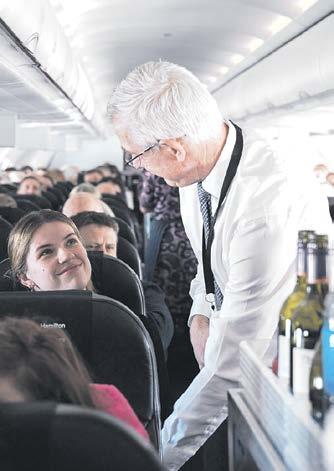
to step away from the aisles, his journey from Hamilton shelf stacker to global CEO leaves a lasting imprint on Air New Zealand - and a new generation of dreamers inspired to follow in his footsteps. Mary Anne Gill travelled from Hamilton to Christchurch and back and had a two-hour city cycle tour courtesy of Air New Zealand and Chill Explore.
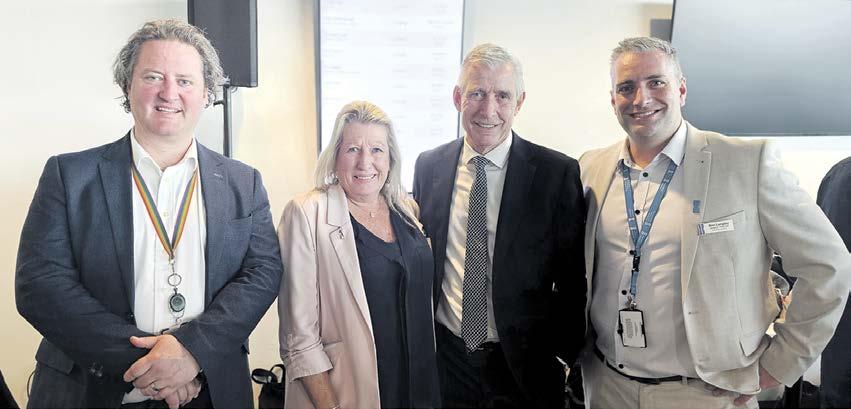

PICK UP POINTS
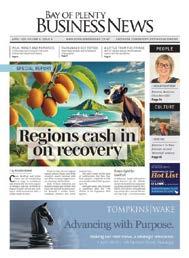
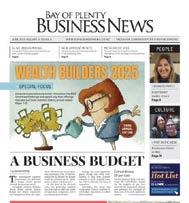
Construction changes underway
The building sector is evolving, reports David Porter
Despite tough times recently, building sector sources say they are beginning to see increasing signs of activity as the construction sector begins to improve.
Matthew Duder, managing director of EBOSS, tells The News the sector is showing signs of stabilising. EBOSS surveys the industry regularly and provides an online library of product catalogues from more than 200 of New Zealand’s leading architectural product suppliers. The firm usually surveys around 400 building companies and close to 500 architectural firms each year. Duder notes the architectural and building sectors are closely related.
The building sector report came out earlier in the year. Speaking to The News following the company’s just-released survey on the architectural industry, Duder says he believes the building sector generally is beginning to stabilise.
Referring to the recently released architectural firm survey, Duder says the report has captured that sentiment has grown significantly compared to last year.
“So we feel that this very much a reflection of how quickly we can grow from here,” he says.
He notes that since the survey data was captured earlier in the year there is still some movement from
architectural practices to right size.
“But we feel there is [now] a stabilisation occurring and eyes are firmly on the horizon, working slowly towards recovery.”
He acknowledges that some architectural firms were starting to “right size” reflecting a change in industry activity over the past 18 months, as well adapting to the differing requirements of the building market.
Meanwhile, in a report released in September by the Registered Master Builders Association, data from its 2025 stocktake shows builders are starting to take a more positive view of the year ahead.
Some 63% think the overall economy will improve within 12 months and 62% expect their own businesses to be in better shape come the end of 2026. The report says this is beginning to show up in workloads, with 64% reporting strong or steady order books, up from 51% last year. Those facing a critical dropoff in work have fallen to 11% from 15%. Conditions remain uneven, with the Southern region improving more quickly whilst Wellington and Auckland still face headwinds.
Despite a tough few years for the construction sector, most New Zealand homeowners describe their recent build as a positive experience, according to
this annual 2025 State of the Sector of around 1,000 master builders and their homeowners. Two-thirds say they were satisfied overall, with the biggest challenge being council consenting.
CEO of Master Builders, Ankit Sharma, says the results show a sector that is resilient and professional, but still held back by systemic issues.
Sharma was quoted as saying that homeowners were telling them that, even in challenging conditions, building in New Zealand can still be a rewarding experience.

Matthew Duder
“Two-thirds had a positive journey, which speaks to the professionalism of our Master Builders across the country. But we cannot be complacent, there are also areas where improvements can lift the sector furtherfaster consenting, clearer pricing, and stronger communication.”
Kiwifruit’s rich returns
The region’s kiwi companies are enjoying the fruits of solid harvests, says David Porter
The annual returns recorded by Bay of Plenty-based agribusiness Zespri for 2004/05 were solid.
As was the case detailed in coverage earlier this year of fellow kiwifruit company Seeka, the kiwifruit harvests have been good, which have turned into excellent returns for the industry.
The returns made an interesting contrast to another locally based New Zealand agribusiness icon Comvita, whose struggles with a saturated local and global market for honey are chronicled in our cover story this month.
In a statement on its annual returns issued earlier this year, Zespri recorded strong demand and market returns from what the company described as its largest-ever crop. As a result, Zespri reported $5 billion in global sales in the 2024/25 season, exceeding the goal it set in 2015 of $4.5 billion by 2025.
Seeka also credited the bumper harvest for its solid returns this year.
Zespri sold a record 220.9
million trays of kiwifruit in 2024/25, an increase from 164.2 million trays in 2023/24.
Direct returns to the New Zealand industry reached more than $3 billion for the first time in 2024/25, with Total Fruit and Service Payments spread across New Zealand’s growing regions, including the Bay of Plenty, Northland, the East Coast, Nelson and the Waikato.
Net profit after tax was $155.2 million, down from $173.3 million in 2023/24, mainly driven by reduced licence revenue from a reduction in available hectares.
Zespri CEO Jason Te Brake was quoted as saying it was pleasing to deliver such a strong result for growers and shareholders. He says it reflected an industrywide effort to deliver a record crop and strong sales in key markets.
“We’ve increased both volume and value in our key markets despite downward pressure in the category,” he says. “That’s a mark of pride for our industry, and reflects the strong demand we continue to see for our
fruit and the efforts the whole industry has put in to focus on providing another high-quality fruit crop.
Te Brake notes that at a per hectare level, returns were up and at record levels for Green, Organic Green and Sweet Green off the back of the season’s improved yields. That followed a challenging few years for growers, he says. Zespri has been able to return strong value at a per tray level for all categories in a record crop year, with final average per tray returns above its February forecast.
Te Brake says Zespri’s NonNew Zealand supply sales have also performed well, with sales of $652.4 million, with 26.5 million trays sold.
He describes 2024/25 as a really positive year for the industry and says the company is excited to build on this momentum as it progresses further into the 2025/26 season.
“Our focus remains on delivering another strong season and maximising the value we return to growers with even more fruit to sell.”


The continuing saga of FBT and gift cards
Inland Revenue put a cat amongst the pigeons in April this year when it released its view on open versus closed loop gift cards. Prior to this date, employers giving gift cards to employees generally treated these as subject to FBT. But Inland Revenue’s view was that this was not always correct.
If “open loop” cards, which are prepaid cards that are able to be used at any retailer, are given to employees, Inland Revenue’s view is that these are so close to being money that PAYE should apply not FBT.
While the core tax should be the same whether PAYE or FBT is paid, taxing such benefits via PAYE means increased compliance costs for the employer who must record these through the payroll system.
The need to gross up the face value of the card means additional real costs for the employer in the form of amounts deter-
mined by gross income such as KiwiSaver contributions and student loan deductions.
The logical reaction from many employers was to move to providing “closed loop” cards instead to ensure the benefit continued to be taxed under the FBT rules. However, this removed some flexibility from the process of providing benefits to employees.
So, employers will be pleased to know that the Taxation (Annual Rates for 2025−26, Compliance Simplification, and Remedial Measures) Bill, introduced to Parliament in August this year, proposes to put an end to the mindlessness of needing to understand whether a gift card is an open loop or closed loop card.
The proposal allows employers to pay FBT on all gift cards, unless they choose to pay PAYE instead. The one exclusion is that gift card benefits that are effectively a substitute for remuneration must continue to be taxed via PAYE.

TAXATION BY ANDREA SCATCHARD
The change will be backdated to 16 April 2025, the date of the previous IR statement. While this can’t be relied on until the Bill is actually passed, likely in March next year, Inland Revenue has brought some sense to the intervening period with a change in approach for open loop cards. It has announced that provided FBT has been paid on open loop cards from 16 April 2025, it will not review the treatment and require PAYE to be paid.
There are some other compliance friendly employment tax related changes in the Bill, including one that in many scenarios will allow an employer

> The proposal allows employers to pay FBT on all gift cards, unless they choose to pay PAYE instead. The one exclusion is that gift card benefits that are effectively a substitute for remuneration must continue to be taxed via PAYE.
the flexibility to pay either FBT or PAYE on cash reimbursement for amounts that would have been unclassified benefits if the benefit had been provided directly by the employer to the employee.
As usual, contact your usual tax advisor for more detailed information and tailored advice.
Andrea Scatchard is a Tax Partner at Deloitte, based in the Bay of Plenty. She can be contacted on ascatchard@deloitte.co.nz
Sponsored Content
Planned changes to the law on building granny flats in NZ
New Zealand is set to undergo significant changes in its building regulations and the resource consent process for granny flats or small standalone dwellings.
These changes aim to simplify the process and encourage development, providing more housing options for families and communities.
Current Regulations
Currently, building a granny flat requires both a building consent and a resource consent. The resource consent process assesses environmental impacts, zoning compliance, and neighbour concerns.
Obtaining a building consent involves a detailed application process and compliance with building codes and standards. This can be time-consuming and costly, often deterring homeowners.
Proposed Changes
The proposed changes, expected to be in force by early 2026, will introduce a building con-
sent exemption and simplify the resource consent process for granny flats up to 70 square metres.
A new National Environmental Standard (NES) will permit granny flats (minor residential units) up to 70 square metres in rural and residential zones without the need for resource consent.
The building consent exemption will apply if the dwelling has a straightforward design, meets the Building Code, and is constructed or supervised by licensed building professionals. Homeowners will need to notify their local council before construction and once the building is completed.
Benefits of the Changes
These changes are anticipated to deliver several benefits:
• Increased Housing Supply:
The exemption is expected to facilitate construction of approximately 13,000 granny flats over the next decade.
• Reduced Costs and Time:

LAW BY LINDA O’REILLY
Removing the need for building consent will save application fees and reduce delays.
• Support for Growing Communities: Councils will still charge development contributions for granny flats through the Project Information Memorandum (PIM) process.
Potential Challenges
While the changes offer benefits, there are potential challenges:
• Infrastructure Strain: More granny flats could place pressure on water, sewage systems, and roads.
• Quality Control: With the
exemption, concerns may arise around quality and safety, making licensed professionals’ involvement essential.
• Environmental Impact: Increased construction could add waste and disrupt ecosystems.
• Property Value and Density: Extra dwellings may affect property values and increase density, which not all residents will welcome.
Infrastructure and Resource Management
To support demand, the government has agreed that infrastructure charges will apply to small standalone dwellings. These will help fund essential services such as transport, water, wastewater, stormwater, parks, and community facilities.
Timeline
The planned changes are expected to be implemented by early 2026, following adjust-
ments to the Building Act and Resource Management Act.
Sheds and Garages
In a related move, the Government has announced plans to simplify rules for small structures like sheds and garages.
Single-storey buildings up to 10 square metres will no longer need to meet a minimum distance from property boundaries. For those between 10 and 30 square metres, the setback will be reduced to one metre.
Previously, these structures had to be placed at least their own height from boundaries unless a building consent was obtained.
These updates will be made by amending Schedule 1 of the Building Act and are expected to come into effect later this year. However, all construction must still meet Building Code standards.
Linda O’Reilly is Special Counsel at Tompkins Wake, Auckland. She can be reached on 09 588 0601, or linda.orielly@tompkinswake.co.nz
Quality o ce space heads north with project
AN EXCITING NEW OFFICE PROJECT UNDERTAKEN BY TAURANGA BASED JWL INVESTMENTS IS POISED TO RE-INVIGORATE THE CITY’S NORTHERN CBD ZONE.

JWL Investment’s “Northern Quarter” project injects not only 6000sqm of new office space into the CBD but also brings a modern, natural and appealing commercial building profile to Tauranga’s harbour edge and skyline.
The company’s general manager Chris Morris says only weeks remain until the opening date, with tenants that include global consultancy and accounting firm Deloitte taking up space for the first time

in Tauranga. Other high profile commercial tenants include well-known law firm Holland Beckett as the founding tenant and will be occupying the top two levels of the fourlevel building.
“Having Holland Beckett come on board very early on in the project’s planning stage gave us the confidence to push the ‘go’ button on the project. It really underscored the value of the project to us, and to Tauranga,” says Chris.


Two other high profile commercial tenants re-locating from existing offices to the Northern Quarter include funds management company Forsyth Barr and First Mortgage Trust. NZ Funds are new to Tauranga and will also occupy the building.
JWL is a locally based property investment trust with multiple quality property investments throughout Tauranga, including the popular Gate Pa shopping center, and the City Side Business Village on Ham-


Street. Its focus has been on building high quality, enduring properties that add to the city’s entire identity, encouraging retail and commercial interactions within their footprint.
The Northern Quarter will prove no exception, offering the opportunity for tenants to establish a café within the main lobby, and a bar opening onto the Strand’s hospitality zone.
> Continuedonpage10

FPA would like to applaud and congratulate JWL Investments on the completion of Northern Quarter stage one. We are very proud and humbled to be able to work alongside JWL, as their architects and interior designers.

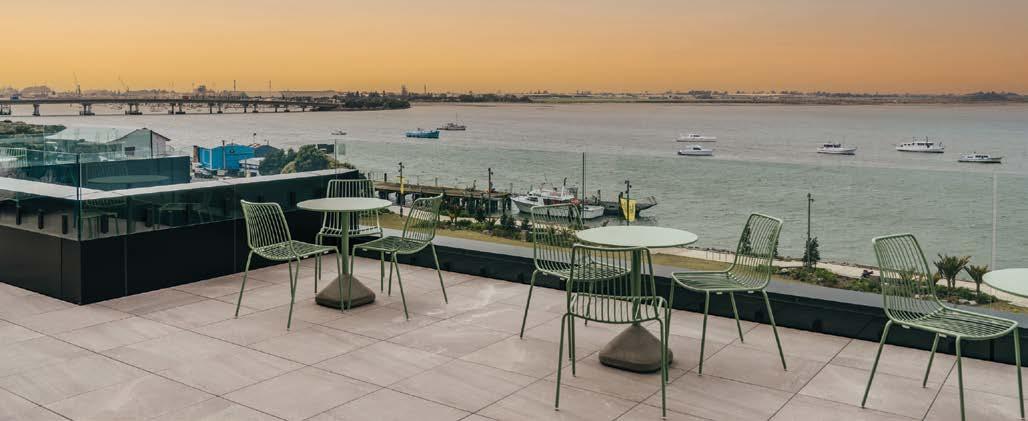
> Continuedfrompage9
A second building is also proposed on the same foundation footprint in the near future, further boosting the foot traffic and appeal of the northern edge of the CBD that offers appealing harbour access, and even the opportunity for a swim during summer lunchtimes.
Chris says the Northern Quarter site has been long held by JWL, having owned it for almost 40 years before kicking off the project in early 2022.
“A lot of thought has gone into the design of the Northern Quarter in terms of its location, and the ways its tenants will access it. That includes locker and bike facilities alongside the 64-car basement car park, with showers and end of journey facilities for staff.”
The office spaces themselves feature exceptional levels of natural lighting, spaciousness and comfort.
The company is particularly proud to achieve a 6 Green Star Design and As Built
NZv1.0 Certified Design Rating for sustainability and environmental impact
“This means you have a building with good energy management systems to minimise electricity use, with a state of the art air conditioning system built around water cooling technology, solar electricity panels on the roof, and a design that optimises the use of natural lighting given the building’s aspect and location.”
Other Green Star features include EV charging capabilities, automated LED
lighting, and low carbon concrete used in construction.
With the selection of high-quality tenants already in place, a further 1000sqm of office space remains that is represented by 600sqm on level one and 380sqm on level 2. It offers premium workspaces for companies that can see benefits in the synergies of sharing such a space. Both offices experience lovely water views.
Hospitality spaces are also still available, these will benefit from instant foot traffic.
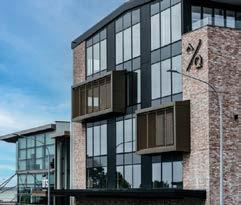


Chris attributes the Tauranga City Council’s investment in building infrastructure through the commissioners’ tenure as helping lift commercial companies’ faith in the city’s previously moribund CBD.
With buildings including the new council headquarters showcasing an all-timber design, and the construction of the library-community hub and museum, interest in re-engaging with the CBD is growing in the commercial community.
“The council is generally remaining committed to seeing more projects continue, and this continues to give commercial developers confidence to invest in the central city zone.”
The project provides an exceptional example of how Tauranga’s property development and building community can punch above its weight to deliver high quality projects.
“We were particularly impressed with the design that architects FPA came up with. The building features a worn red brick exterior, while the shape and design of the windows suggests a building that may be connected to the harbour, like an
ex-industrial or wharf type building, it fits very well.”
Project management has been provided by Veros, a Tauranga-Waikato-owned and operated project management company with strong commercial focus.
Meantime project construction is being done by well-known and established local construction company Watts and Hughes. It has undertaken numerous high profile commercial and government projects throughout New Zealand.
Chris says having more cranes than ever on Tauranga’s skyline is an encouraging site as the city plays catch up and capitalises on the appealing natural environment the harbour offers as a backdrop to the central city.
“And we see the Northern Quarter as a very appropriate bookend to this side of the city’s CBD, helping inject more foot traffic through the area, and bringing a level of quality to Tauranga’s city office space that matches its natural appeal as a place to live and work.”
To learn more about the Northern Quarter, visit northernquarter.co.nz


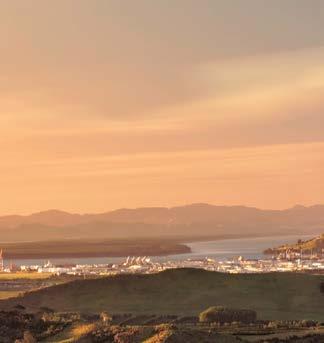

New





> BUSINESS PROFILE
HOBEC’S NEXT CHAPTER
Holland Beckett is delighted to start its next chapter as the anchor tenant in the new Northern Quarter development and to play an active role in the revitalisation of Tauranga CBD.
Holland Beckett is the largest law firm in Tauranga. The firm, known originally as WS Holland, was established in 1937 by William Sydney Holland. In 1949 Holland was joined by Barney Beckett – the duo providing the well-known name of the firm. Over the 88 years since its establishment there have been several moves and changes as the firm grew from strength to strength. In 2008 expansion necessitated the move to ‘The Hub’ on Cameron Road and from there Holland Beckett – or Hobec – continued to be a legal leader in the region, their Tauranga office continuing to grow in size and capability, along with offices in Rotorua and Whakatāne.
When Hobec moved their Tauranga office to the open plan space at The Hub 17 years ago, it was a bold move. Traditionally lawyers all had their own office, but the partners credit the growth of the firm to the flexible and collaborative environment. As a full service firm, specialist teams work together to share expertise and the open plan environment facilitates that collaboration, as well as enhancing supervision and delegation which are key to developing good lawyers. With expert senior specialists supported by highly skilled junior lawyers and support staff, the firm has the capability and capacity to provide exceptional service and value to clients over the full spectrum of legal services – from a simple Will to a complex legal matter.
Growth has now triggered the next move and the start of a new chapter for Holland Beckett, one that brings them into the landmark development that is Northern Quarter. Taking approximately 2000 square meters of space over the top floor and half of the second floor, the larger footprint has been thoughtfully designed, with the legal team located on the same floor, more breakout spaces and collaborative rooms with the most up to date AV technology.
Practice Manager Sharline Fitzgerald said “We are focused on providing an office that meets the needs and expectations of both clients and staff. With flexible work options now the norm we see benefits in making the office a destination that our people want to come to. As the city grows we are seeing a greater emphasis on public transport, cycleways and even a ferry service. These services tend to terminate at the CBD so we are looking forward to being able to increase our participation.”
With over 130 people in the Tauranga office, including almost 70 lawyers (compared to 14 when the firm moved into The Hub in 2008), Hobec decided to make this move to support the city that has supported them. The firm is well known for its contributions to the community, with a long history of committing time, energy and resources to a variety of organisations including sporting and cultural teams, community groups and charity initiatives, local events and the business community. Hobec wanted to have
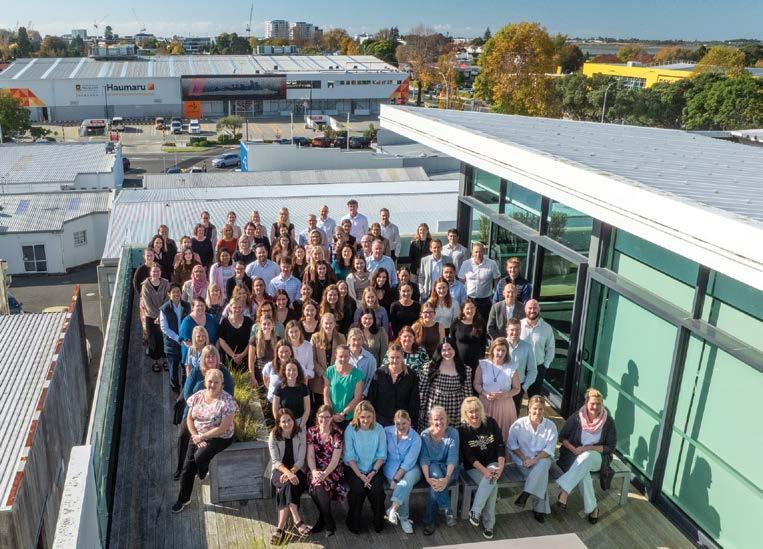
a physical presence in the heart of the city and to be part of the major redevelopment currently underway. Bringing their large team to the heart of the city is good for Holland Beckett – and it is great for the business, retail and hospitality sectors.
As Holland Beckett starts this next chapter the firm is delighted to celebrate the promotion of Hilary Anderson to Partner, five lawyers to Senior Associate and four to Associate in their Tauranga team.
OUR NEW PROPERTY PARTNER
Congratulations to Hilary Anderson, Holland Beckett’s newest Partner*.
Hilary is a highly regarded property and commercial lawyer with over 12 years of experience. She has a strategic focus on urban development from many years working with a prolific infill housing developer, giving her deep insight into the legal and practical challenges of intensification projects.
Hilary’s expertise spans residential and commercial property transactions and finance, property development, conveyancing, subdivisions, commercial leasing, franchising, and contract matters. She has significant experience advising high net worth individuals and families on private matters, including the management of complex trust structures and large estates.
Hilary is equally committed to supporting those entering the property market for the first time, recognising that buying a first home is one of the most significant financial and emotional decisions people make and that good, accessible legal advice is integral to making this a smooth and less daunting process.
Hilary joined Holland Beckett as Special Counsel in August last year, working with Dean Thompson and his team prior to his retirement. Before that, she spent over a decade at Cooney Lees Morgan, working closely with Owen Cooney.
Recognised in 2022 as one of New Zealand Lawyer’s Rising Stars, Hilary is known for being practical, straightforward and approachable.
Born in Ōhope, she has strong ties to Whakatāne and the Eastern Bay of Plenty and has called Tauranga home for more than thirteen years, where she is well regarded for her strong relationships and outstanding reputation in the community.
*Hilary’s promotion to partnership takes effect 1 October 2025, subject to NZLS approval.
CELEBRATING OUR SENIOR ASSOCIATES
Holland Beckett is thrilled to introduce Bridget Bailey, Hester Sutherland-Stacey, Sophie Law, Jessica Fitzgerald and Rachel Withington – our new Senior Associates.
Bridget Bailey – Resource management
Bridget advises on all aspects of resource management and local government law, with a particular focus on consenting infrastructure and renewable electricity projects under the RMA and fast-track processes. Bridget provides pragmatic and strategic advice to public and private clients and has appeared in the Environment Court, High Court and local authority proceedings,
as well as being appointed as Chair of an expert consenting panel under the Covid-19 fast track legislation.
Bridget is a member of the Auckland District Law Society Environmental and Resource Management Law Committee and the RMLA. She is also a committee member Mount Maunganui Playcentre.
Hester Sutherland-Stacey –Property and Commercial
Hester provides expert advice for developers, companies and individuals, with a focus on commercial property development. She advises on a range of property and commercial matters such as acquisitions and disposals of land and businesses; leasing; ownership structures; financing arrangements; and a range of commercial matters including terms of trade, construction contracts and service contracts. She also advises on all residential property matters from family homes to large scale subdivisions. Hester began her legal career working in employment law, civil and regulatory litigation. Practicing in these areas provided a strong foundation in legal processes and the practical realities for people and business entities.
Hester is a board member of ADAPT (Assisting Different Abilities Peoples Trust).
Sophie Law – Employment and Family
Sophie advises on a broad range of employment law matters, both contentious and non-contentious. Sophie has particular experience advising on personal griev-
Transform. Shape. Create.
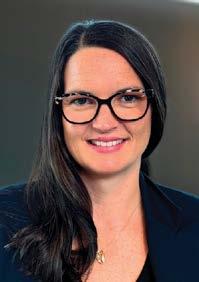
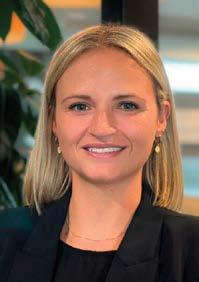
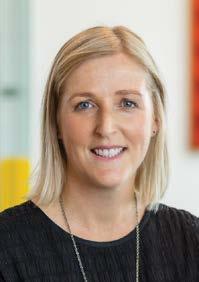

ance claims, disciplinary and performance processes, restructures, negotiated exits, employee investigations, and Holidays Act compliance issues. This includes assisting clients with representation in dispute resolution processes such as mediation and the Employment Relations Authority.
Sophie also assists employer clients to implement proper and thorough processes and is focussed on upskilling clients through delivering bespoke training workshops.
To complement her expertise in employment law, Sophie also works alongside our family law team advising on relationship property matters.
Sophie is a Trustee of He Kaupapa Kotahitanga Charitable Trust (HKKT).
Jessica Fitzgerald –Corporate
Jess has significant experience in a range of complex corporate matters including M&A, private equity, commercial contracts, corporate governance, and general corporate advice/structuring. She provides pragmatic


results focused advice for corporate clients as well as small to medium sized businesses. She is a key team member for the firm’s corporate clients, including Port of Tauranga, Robotics Plus and Oriens Capital.
Rachel Withington –Property and Commercial
Rachel is an experienced property and commercial lawyer, working with private clients and their related entries across all facets of property and commercial law.
A multi-disciplinary lawyer, Rachel has expertise in residential conveyancing, along with commercial, rural and horticultural conveyancing and leasing. She advises on asset protection including trust establishment, trust management and trust wind ups, and estate and succession planning. She also advises in elder law, including occupation right agreements, residential care subsidies and loans, reverse mortgages and enduring powers of attorney.
Rachel advises commercial clients on sale and purchase of businesses, share sale and
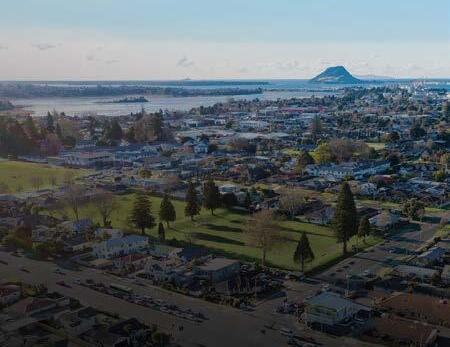
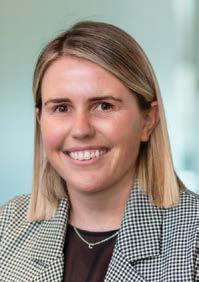

purchases, shareholders agreements and has specialist experience acting for Foodstuffs Members on the purchase and sale of New World, Four Square and PAK’nSAVE stores throughout the country.
Rachel is on the Board of the Tauranga Business Chamber.
INTRODUCING OUR ASSOCIATES
Congratulations to Angus Hendry, Emily Merrill, Rebecca Irvine and Waiata Groot who have recently been promoted to Associate.
Angus, Emily and Rebecca have experience across a wide range of property and commercial matters including sale and purchase of residential and commercial property, developments and subdivisions, sale and purchase of businesses, commercial contracts and leasing.
Alongside broad property and commercial knowledge, Angus has specialist expertise in trusts, charities, incorporated societies and estate planning. Emily has


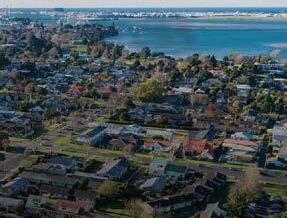
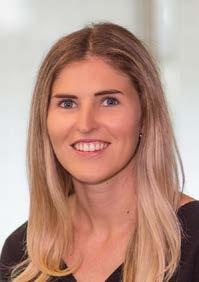

experience in buying and selling of kiwifruit orchards and forestry assets as well as renewable energy, advising both landowners and developers on large scale solar projects throughout New Zealand. Rebecca is particularly experienced in local government transactions and assists local and regional authorities.
Waiata is in Holland Beckett’s family law team, the largest family law team in the Bay of Plenty. She specialises across a broad range of family law matters and is committed to supporting clients through the legal process (often involving high-stress or sensitive family dynamics) to find the best solutions for clients, children and their wider families.
Partner John Mackay shares, “These promotions are testament to the quality of our lawyers and the continued growth of the firm. Holland Beckett now has around 70 lawyers across our Bay of Plenty offices and providing them with career progression and development is a key priority for us. These promotions over several key practice areas strengthen the leadership, capability and depth of our teams.”



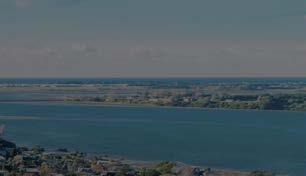





New O ce for Forsyth Barr Tauranga’s Expanded Investment Advisory Team
The move to the larger office at Northern Quarter marks an exciting milestone for the Forsyth Barr Tauranga team as it continues to expand its presence in the region. The move is a result of outgrowing the previous premises, reflecting an increasing demand for professional investment advice in Tauranga and the wider Bay of Plenty region.
“It’s an exciting time for us,” says David McConnochie, Forsyth Barr Tauranga Manager and
Investment Adviser. “The growth in this region has been significant, and our new office in the Northern Quarter will allow us to continue providing high-quality investment advice to our clients in a space that matches our ambitions.”
For nearly 90 years, New Zealanders have placed their trust in Forsyth Barr’s professional investment services. Founded in 1936, Forsyth Barr has 25 offices across New Zealand, employing
over 600 people and managing or advising on over $35 billion of clients’ investments.
The experienced Investment Advisers at Forsyth Barr work closely with their clients to help them understand the benefits and risks of different investment strategies, tailoring solutions to individual financial goals.
As economic conditions shift, the need for expert guidance has never been more important. With term-deposit interest rates on the
decline, investors are increasingly looking for alternative strategies to grow their wealth while managing risk effectively.
Whether you’re exploring alternatives to traditional savings or looking to build a diversified investment portfolio, Forsyth Barr’s Investment Advisers are ready to help.
Forsyth Barr’s Tauranga team consists of Investment Advisers David McConnochie, Brett BellBooth, Andrew Davis, Philip Kil-
patrick, David Le Breton, Scott Moriarty, Paul O’Driscoll, Jeannine Tolley, Roger White, Associate Adviser Stacey Russell, and Adviser Assistants Erin Robson and Fiona Violich.
To learn more about Forsyth Barr, you are welcome to visit the new office when it opens at Northern Quarter, or get in touch with one of the Forsyth Barr Tauranga Investment Advisers by calling 07 578 2737. forsythbarr.co.nz



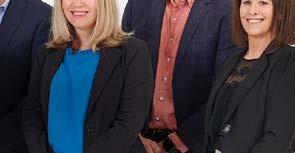
NORTHERN QUARTER: ENGINEERING TAURANGA’S FUTURE
Kirk Roberts Consulting has been a key contributor to Tauranga’s Northern Quarter development, a landmark reshaping the city’s skyline and future. Delivered with skilled partners, it shows what can be achieved when expertise and collaboration come together.
Over several years, our team has provided civil, fire, geotechnical and structural engineering services across different stages. The project highlights the
strength of our multidisciplinary model, bringing specialist expertise together under one roof to deliver smarter and more resilient solutions.
What sets Kirk Roberts apart is the perspective we bring. Having designed and engineered our own developments, we understand the challenges clients face first-hand, from design through to delivery.
This experience gives us a deeper appreciation of the journey, which we apply to projects
like Northern Quarter.
We were also part of the team that achieved a 6 Green Star Design & As Built NZ v1.0 Certified Design Rating, an outcome made possible through close collaboration with project partners.
With five offices across New Zealand, Kirk Roberts combines local presence with nationwide capability. For Bay of Plenty clients, that means a dedicated Tauranga team supported by expertise across the country.
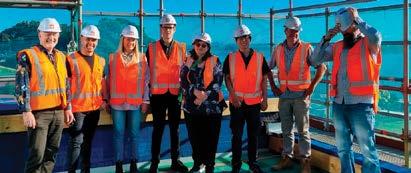
“Northern Quarter demonstrates what is possible when collaboration is at the centre of a project,” says Craig Manssen, Regional Manager Bay of Plenty.
“Our Tauranga team has con-
tributed to a development that sets a benchmark for the city’s future.”
We are always looking to find better ways. Northern Quarter is a clear example of that philosophy in action.


What’s the deal?

> By MAHÉ DRYSDALE, Mayor of Tauranga
Bay of Plenty Business News
readers will have seen some media coverage in recent weeks about the Regional Deal currently being negotiated between Government and the Western Bay of Plenty, which makes it timely to ask: What’s the Deal?
The Western Bay of Plenty is one of New Zealand’s fastest growing sub-regions, so it was very positive to have been selected by central Government to negotiate a Regional Deal that will help unlock our full potential and improve liveability.
In short, ‘the deal’ is a longterm strategic partnership involving key local organisations – Tauranga City Council, Western Bay of Plenty District Council, Bay
of Plenty Regional Council, the SmartGrowth Combined Tangata Whenua Forum and economic development agency Priority One – and the Government. Its aim is to agree on a 30-year plan for the region, to ensure that everything required to manage the sub-region’s growth and promote economic development is aligned, and funding is in place to deliver the first 10 years of the plan.
Those priorities centre around the infrastructure we need to meet our current and future needs – including our roads, water, wastewater systems and social infrastructure – with the following key objectives in mind.
A Regional Deal would help to deliver much-needed housing capacity in our sub-region and improve housing affordability.
It would help attract new businesses and investment, support-
> EMAIL SECURITY ESSENTIALS
ing wage growth and job creation.
A Regional Deal would help improve access to education, health care and essential services.
It would help improve the transport and social infrastructure that our growing sub-region needs.
And, it would provide certainty – what, when and where infrastructure is to be built! Certainty drives confidence, confidence drives investment.
Our sub-region has well-developed and consulted plans in place through the work of SmartGrowth and the Urban Form and Transport Initiative (UFTI), so we are already well-aligned and wellplaced to negotiate and implement a Regional Deal which will bring the best possible outcomes for our people.
We’re currently negotiating the final shape of our deal with
the Government, and our aspirations are significant. Our belief is that over the coming decades, the deal could:
• Deliver up to 40,000 new homes
• Support the creation of 35,000 jobs
• Deliver real GDP growth of 4.5% per annum.

Another key advantage of having a deal in place is that future political cycles will largely be taken out of the equation. The end result will be an economic growth plan that has rigour, certainty and commitment, ensuring that vital work programmes will continue as planned.
ing a deal in place is that future political cycles will largely be growth plan that has rigour, ensuring that vital work

The Regional Deal partners will be keeping the community informed

Why SPF, DKIM and DMARC matter now more than ever
Email remains the cornerstone of business communication – but it is also one of the most commonly exploited channels for cybercrime.
Increasingly sophisticated phishing attempts, domain spoofing, and business email compromise (BEC) attacks are targeting New Zealand businesses of all sizes, causing financial loss, reputational damage, and compliance headaches.
Cybercriminals no longer need to break into your systems. They simply impersonate your domain, trick your clients or staff into trusting a fraudulent message, and wait for the fallout. Without the right protections in place, even a reputable company can be misused as a weapon in someone else’s scam.
This is where three critical email authentication protocols come into play: SPF, DKIM and DMARC. Together, they act as a digital security checkpoint, protecting your business from being misrepresented – and ensuring legitimate messages reach inboxes as intended.
SPF – Controlling who can send on your behalf
SPF, or Sender Policy Framework, lets you define which mail servers are allowed to send emails using your domain name.
When someone receives an email that claims to be from your business, their email provider checks your SPF record to validate the source.
This helps reduce domain spoofing, but it does not protect against forged sender names that may still look convincing to recipients.
DKIM – Verifying that messages are untampered
DKIM, or DomainKeys Identified Mail, adds an encrypted signature to your outgoing emails. This proves that the content has not been altered in transit and confirms that the message genuinely came from your domain.

Correct setup is essential, as it involves managing cryptographic keys and updating DNS records.
DMARC – Setting the rules and gaining visibility
DMARC, or Domain-based Message Authentication, Reporting
and Conformance, builds on SPF and DKIM by defining how recipient servers should handle messages that fail authentication. It also enables reporting so you can monitor who is sending emails on your behalf.
This level of visibility is crucial for spotting abuse and improving email security across your organisation.




Why it matters for every business
Implementing these protocols is not simply a technical upgrade – it is a business risk mitigation strategy. They help prevent impersonation, protect customer trust, support regulatory compliance, and improve the deliverability of your genuine business communications. At Aviation IT, we work with organisations across aviation, retail and professional services to strengthen their cyber resilience. If you are unsure whether your domain is protected, now is the time to check. Because in today’s digital environment, assuming your emails are safe is no longer enough.
Soaring to new heights in I.T. Experience better I.T.
Tim Taylor is the Managing Director at Aviation IT, based in the Bay of Plenty. He can be contacted on 07 777 0025 or 021 222 6455, tim@aviationitservices.co.nz www.aviationit.co.nz
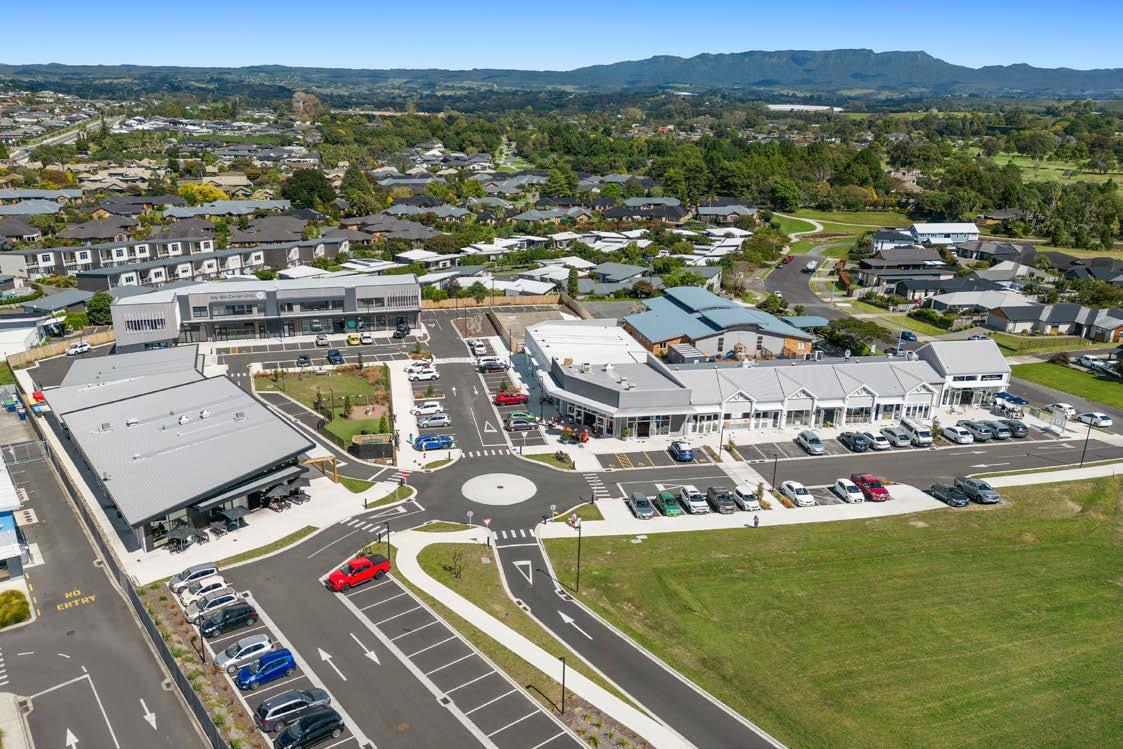
OMOKOROA NEEDS MEDICAL SERVICES!
Omokoroa is growing fast and there’s increased demand for local and easily accessible medical and health services.
The Village Medical Hub offers you the perfect opportunity to secure a premium location in a well-planned community precinct.
There’s up to 350m2 designated for a GP medical centre, with 276 onsite car parks available.

Interested to learn more? Contact Andrew Vincent.
P. 021 059 8365 E. andrewv@fosters.co.nz
340 new homes by 2027, 1160 new homes by 2034, 2940 homes by 2054 Growth
Population up 65.8% since 2018
Future population growth expected to be 11,000 residents
